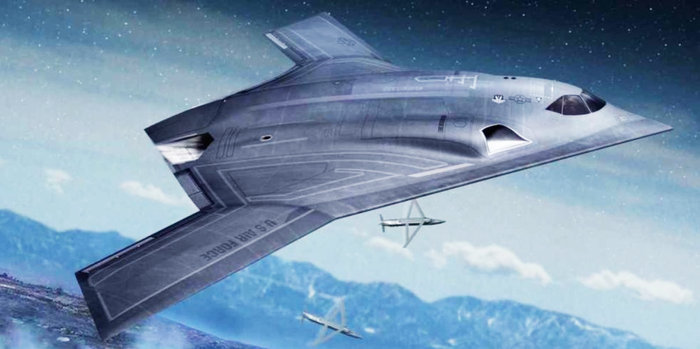The party was a few months coming, but Northrop Grumman Corp. recently gathered company and government officials and employees in Salt Lake City to celebrate landing a huge U.S. Air Force contract.
The company last October was awarded a contract for the engineering and manufacturing development and early production of the Long Range Strike Bomber, or LRS-B, and the get-together at the company’s local operations marked the contract award and featured encouragement to move development along quickly.
“We need you to go build this aircraft and to get it on the line and, please, don’t be late,” said U.S. Rep. Chris Stewart, R-Utah. “The world isn’t going to sit down and wait for you to finish this airplane, because, I think, we live in a very dangerous time.”
Exactly what the contract will mean locally is unclear. A company representative was mum about employment and economic impacts of the contract on Utah Northrop Grumman operations. The company has about 1,100 employees in the state, including about 550 in Salt Lake City.
The LRS-B is designed to replace the Air Force’s aging fleets of bombers, including the B-52 and B-2. The LRS-B contract is in two parts. The contract for the engineering and manufacturing development, or EMD, is independently estimated at $21.4 billion in 2010 dollars. The second part consists of options for the first five production lots, comprising 21 aircraft out of the total fleet of 100. An independent estimate pegs the award at $511 million per aircraft in 2010 dollars.
The Air Force has not publicly shared a production schedule but has said it expects initial operating capability will be achieved in the mid-2020s.
Kathy Warden, president of Northrop Grumman’s Mission Systems sector, said the Air Force needs the bomber “and we don’t have time to waste. … It is a very important time in our nation’s future as we look forward, and LRS-B must get started.”
Stewart, who flew rescue helicopters and B-1 bombers in the Air Force, said the LRS-B “is an incredibly important weapons system,” representing the best of American technology, innovation, leadership and strategic thinking.
And that’s what’s needed now, he said, calling this the most dangerous time for America since 1941 and saying the bomber will make war less likely rather than more likely.
“Now, look, I’m not predicting the end of the world. … But we have to be prepared for situations which we may not envision,” he said.
“Do you think China noticed that we awarded you this aircraft? Do you think China noticed that we’re going to go ahead and build this airplane? Because I promise you they do. And they recognize this tilts the balance of power towards the good guys.”
Speaking via video, U.S. Sen. Orrin Hatch, R-Utah, said the U.S. must maintain “our decisive technological edge” in an increasingly dangerous world. The world needs a U.S. military capable of deterring and defeating rouge groups and rouge nations, he said.
“Similar to the development of the groundbreaking F-35 fighter, platforms such as the Long Range Strike Bomber will provide for our common defense for decades to come,” Hatch said.
Also speaking by video was U.S. Sen. Mike Lee, who said the bomber is a needed replacement for the six-decade-old B-52. “I continue to be proud that the citizens of Utah are leading the way in developing the technologies that will be crucial to defending the homeland and protecting the freedoms of Americans for generations to come,” Lee said.
Much of the ceremony was dedicated to the work done by Utah Northrop Grumman employees.
“We could not have done this without you and I thank you for all your efforts, not just in the win for this program but what you do each and every day on the many programs that make up the Northrop Grumman portfolio,” Warden said.
Their work enables the company to provide unmatched innovation and affordability for company customers, and the military recognizes those efforts, she said.
“You’re saving lives and you’re supporting our warfighters in their toughest times, and for that you should feel particularly proud,” Warden said.
Val Hale, executive director of the Governor’s Office of Economic Development, told the crowd that the contract “recognizes the tremendous work you do every day for our men in uniform.” He thanked the employees “for allowing us to sleep better at night,” knowing that the bomber will become reality.
Hale also noted Northrop Grumman’s contributions to the state aerospace industry, which currently has about 110 companies with about 22,000 employees, not counting 20,000 more people at Hill Air Force Base or the jobs the industry provides for vendors and manufacturers throughout the state.
Northrop Grumman has provided long-range strike systems for the Air Force for 35 years. The company produces the B-2, the only existing stealth bomber.
The Salt Lake City facility manufactures and tests navigation and situational awareness products that are used in platforms from undersea to outer space, including submarines, land vehicles, rotary- and fixed-wing aircraft, and satellites. The 278,000-square-foot facility has been in place more than 50 years.
SLC Northrop Grumman plant fetes LRS-B bomber contract
- Details








